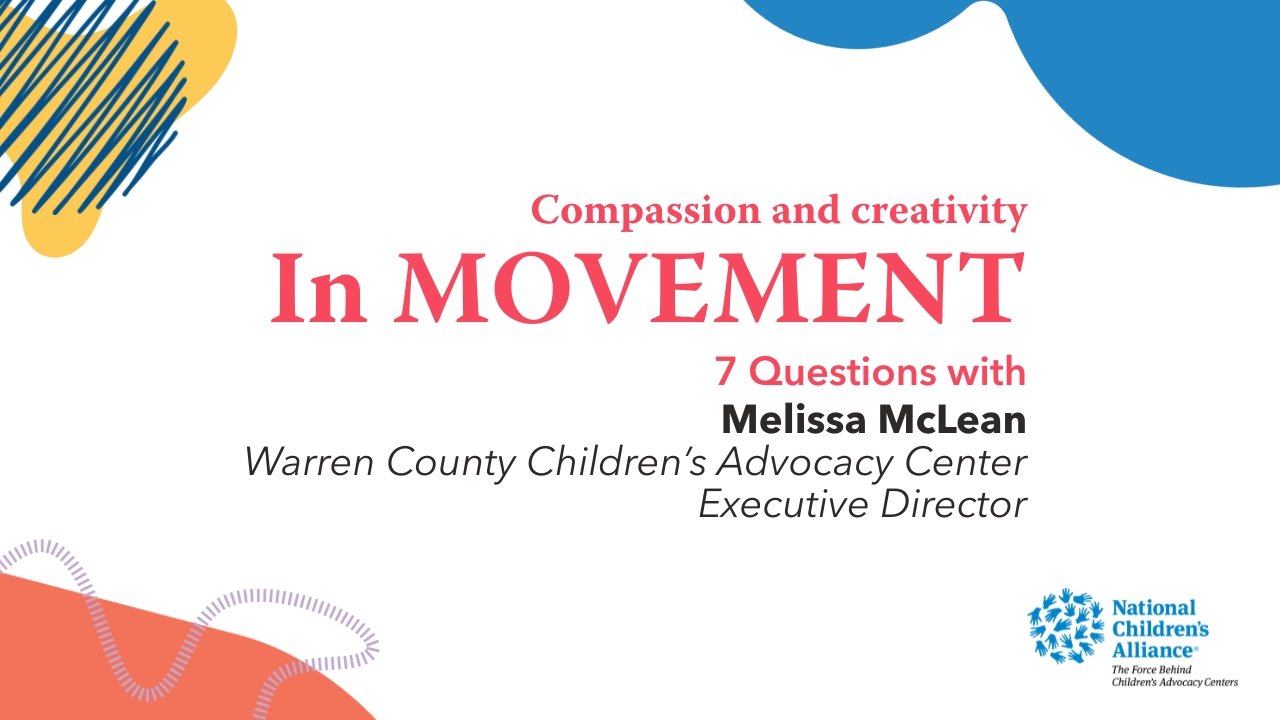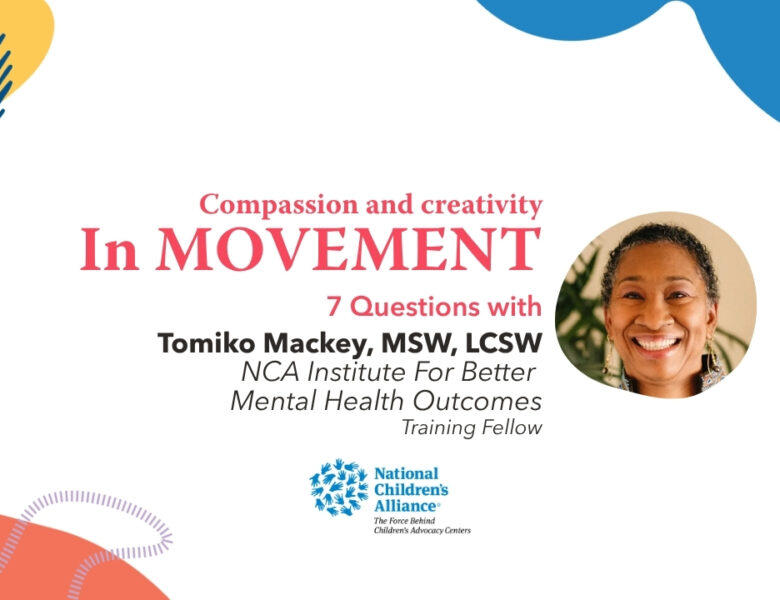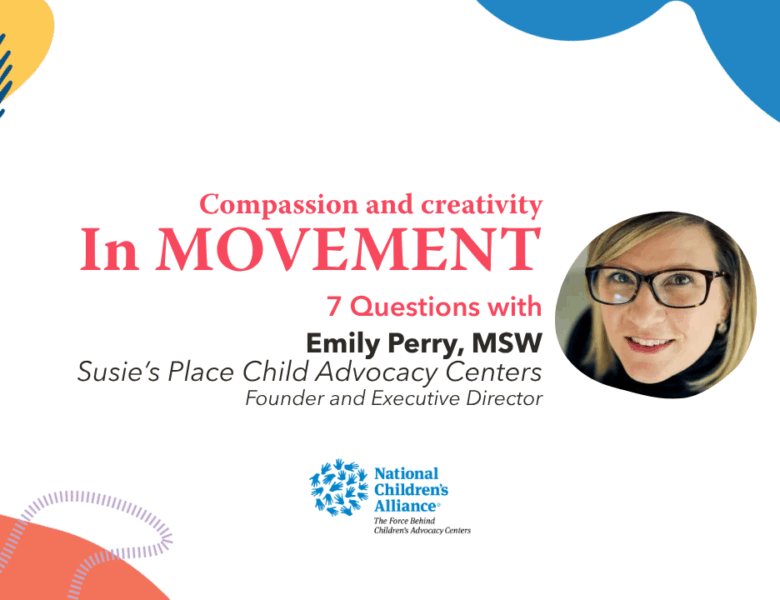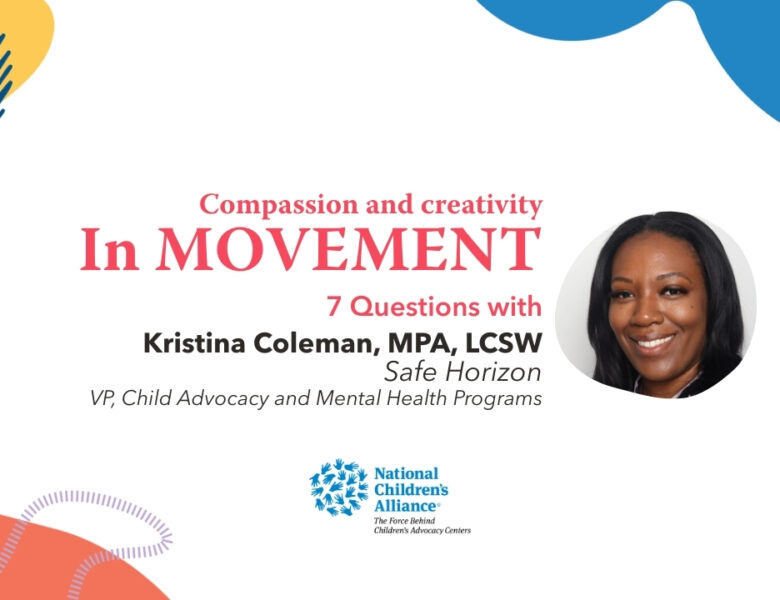In Movement: 7 Questions with Melissa McLean | Warren County CAC | Pennsylvania
August 6, 2025
If you attended the 2025 NCA Leadership Conference, you likely had the privilege of seeing Melissa McLean onstage, helping to lead a discussion about the Rural Collaborative Work Group, or CWG.

Like the other NCA CWGs, this group takes a deep dive into the strengths, needs, and innovations that are specific to rural CACs, and Melissa has been a thought leader for this group and for her community.
As the Executive Director of the Warren County Children’s Advocacy Center, located in Warren, PA, Melissa has brought her insights and inspirational leadership to the children and families served by the center, and to the latest in NCA’s series of interviews with leaders in the CAC movement. Take a moment to read on – it will be well worth your time.
Why did you choose this as a career?
I didn’t plan on becoming a forensic interviewer or the Executive Director of a Children’s Advocacy Center (CAC), but once I found this work, I knew I’d landed somewhere that mattered. I’ve always been drawn to spaces where compassion and accountability meet. When I saw how a CAC can shift the trajectory of a child’s life – how it reduces trauma, brings professionals together, and creates a real path forward – I knew I wanted to be part of that.
That said, I’m not sure I chose this work so much as it chose me. In every role I’ve held, I’ve been passionate about protecting children and defending their right to a safe and joyful childhood. Too often, systems are built with adults in mind, and children get unintentionally silenced or overlooked. I believe we all have a responsibility to look out for one another and lift each other up wherever and whenever we can. This work lets me do that in the most meaningful way I know.
What is something interesting that you have learned recently?
Lately, I’ve been learning more about how isolation, lack of access, and generational trauma shape the realities of rural families. It’s deepened my understanding of the challenges we see, but also the strengths. Through my work on the National Children’s Alliance’s Collaborative Work Group (CWG), I’ve been part of conversations about national strategy, funding equity, and rural innovation. One thing is clear: rural CACs may be small, but we are scrappy, creative, and incredibly resourceful. We stretch every dollar, wear multiple hats, and find ways to make things work even when resources are thin. And we bring a perspective to the national table that’s essential.
I’m also really interested in how different cultures, faith communities, and identities respond to child maltreatment. There’s so much to learn at the intersection of those experiences – how people’s beliefs and environments shape their understanding of harm, healing, and justice. I think these themes are going to become keys to working together and really making a difference in preventing childhood harm and trauma in the coming decades.
What is a challenge that you and your colleagues feel proud of solving?
In Warren and Forest counties, we serve kids in deeply rural areas where resources are limited and it’s easy to fall through the cracks. One of our biggest challenges has been building a truly collaborative response—across law enforcement, child protection, mental health, medical care, and advocacy—that feels seamless and safe for the child. That kind of trust and coordination takes time, but we’ve worked hard to build it.
We also listen closely to what our community tells us they need. A few years ago, local mandated reporters (teachers, counselors, therapists) started asking for more tools to help them recognize and respond to child abuse in trauma-informed ways. That led us to create VILLAGE, a training program designed to meet those needs. It’s focused on helping professionals understand trauma, spot signs of maltreatment, and respond in ways that support both the child and the larger system of care. It’s one more way we’re strengthening the safety net around kids.
I’m especially proud of how we’ve leaned into trauma-informed practices across the board, including integrating our facility dog, Tiger, into interviews and court prep. It might look like a simple gesture, but for a child sitting in the aftermath of abuse, Tiger’s presence can make all the difference.
What about your work inspires you and keeps you going?
The children. Always the children. The ones who walk through our doors scared, confused, and quiet – and leave with a little more confidence, a little more peace. If they have the courage to talk, we have the responsibility to listen. And not just listen, but believe them, protect them, and walk with them. That’s what keeps me grounded. Even on my hardest day, I’m reminded that it’s nowhere near the hardest day that a child is having.
I’m also inspired by our team and the broader CAC movement. In rural areas, we wear a lot of hats, but we don’t wear them alone. Being part of a local, state, regional, and national network that collaborates, adapts, and centers children fuels me to keep going.
At our CAC, we have an unassuming picture frame emblazoned with the words: “Every child is a star.” Inside are hundreds of paper origami stars – one for each child that we have had the privilege to work with. Each child that we work with leaves a piece of themselves with us when they move on, and that inspires me to keep going.
What is the biggest need for kids you think we can meet in the next 5 years?
We need to close the access gap – especially for kids in rural communities. They need trauma-informed medical care that isn’t hours away. They need quality mental health services. They need all the social support and systems available to their counterparts in areas with more resources and wealth. They need systems that work together without retraumatizing them.
That means breaking out of silos and building real partnerships. The best solutions come through conversation and trust – through people and agencies willing to sit down and share the responsibility. I believe we can meet these needs with creative, community-driven approaches: mobile services, telehealth, flexible resources, and deep local commitment.
What do you think the ideal future looks like for kids?
Every child deserves a future where they’re safe, supported, and believed in the first time, and we can give that to them. Every child deserves a future where healing and justice don’t depend on your zip code. Where systems built to protect kids actually do protect them – with fewer barriers, more compassion, and a lot more listening.
I want to see communities that don’t just respond to trauma but work to prevent it. I believe CACs are a key part of that future – offering a bridge between harm and healing, and a space where kids are truly seen and heard. With all of us working together, I see childhoods full of magic and promise, the way they should be!
Finally, what is next for you?
Honestly, I’d be grateful just to keep doing this work. It’s not easy work, but it’s meaningful – and it’s shaped who I am in this second part of my life. I hope to keep growing our local CAC, supporting our team, walking alongside children and families, and continuing to build strong systems here in our rural community.
At the same time, I’ve come to see how much rural voices are needed in the national conversation. Through my work with the CWG, I’ve been honored to help bring those perspectives forward—and I’d welcome more opportunities to contribute on that level.
But ultimately, “What’s next?” Hopefully, more of this: showing up with purpose, learning as I go, and doing the kind of work that centers the voices of the kids who trust us with their stories.
——————————————————————————-
Learn more about Warren County Children’s Advocacy Center here.




